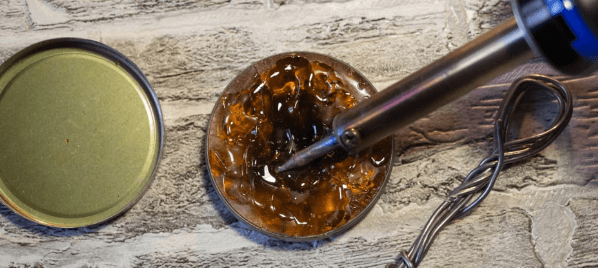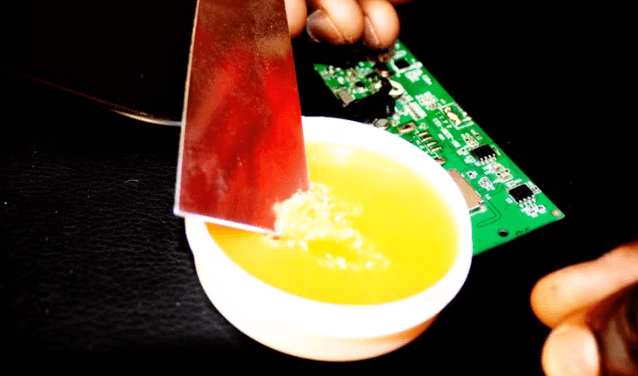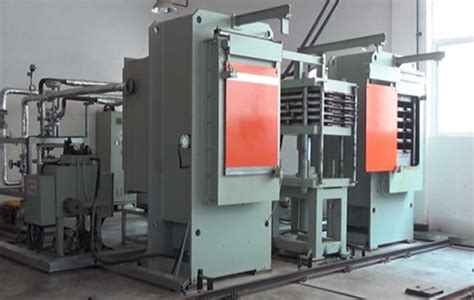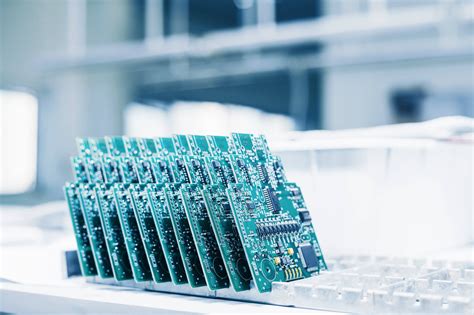What is in Soldering Flux: Composition, Types, and Functions
Introduction to Soldering Flux
Soldering flux is a critical chemical agent used in the soldering process to facilitate the joining of metal surfaces. This essential material serves multiple purposes: it cleans the metal surfaces, prevents oxidation during heating, and promotes better wetting of the solder. Without flux, most soldering operations would be significantly more challenging or even impossible, especially when working with common metals like copper, brass, and various alloys.
The history of soldering flux dates back thousands of years, with early metalworkers discovering that certain natural substances could improve the quality of their metal joints. Modern fluxes have evolved into sophisticated chemical formulations designed to meet the exacting standards of today’s electronics manufacturing, plumbing, and metalwork industries.
Core Components of Soldering Flux
1. Activators
Activators form the most chemically active part of the flux formulation and are responsible for its primary functions:
- Organic acids (like adipic, glutaric, or succinic acid) provide moderate activity for many soldering applications
- Inorganic acids (such as hydrochloric acid or phosphoric acid) offer stronger cleaning action for difficult-to-solder metals
- Amine hydrohalides (commonly used in electronics fluxes) break down during heating to release active halides
- Rosin (a traditional activator derived from pine tree resin) provides mild activation when heated
These compounds work by removing thin oxide layers from metal surfaces and preventing re-oxidation during the soldering process. The choice of activator determines the flux’s activity level and the need for post-soldering cleaning.
2. Vehicles
The vehicle forms the base of the flux and serves multiple purposes:
- Rosin (colophony) remains a popular vehicle in many fluxes, particularly for electronics
- Natural resins provide a stable base for certain industrial fluxes
- Synthetic resins offer more consistent properties for precision applications
- Solvents (like alcohol or glycol mixtures) keep the flux in liquid form before application
Vehicles transport the activators to the work surface, provide temporary protection from oxidation, and help exclude air during the soldering process. They also influence the flux’s viscosity and application characteristics.
3. Additives
Modern fluxes often include various additives to enhance performance:
- Surfactants improve wetting and spreading characteristics
- Rheology modifiers control the flow properties of liquid fluxes
- Stabilizers prolong shelf life and maintain consistent performance
- Colorants help in visual inspection of flux application
- Anti-spattering agents reduce solder ball formation in wave soldering
These specialized components allow flux manufacturers to tailor their products for specific applications and process requirements.

Types of Soldering Fluxes and Their Compositions
1. Rosin Fluxes
Traditional rosin fluxes remain widely used, particularly in electronics:
- Rosin (R) fluxes: Mildly activated rosin bases, leaving minimal residue
- Rosin Mildly Activated (RMA): Contains small amounts of activators for better performance
- Rosin Activated (RA): More aggressive formulations for difficult applications
These fluxes are derived from pine tree resin and are particularly valued in electronics for their non-corrosive residues (when properly formulated and processed).
2. Water-Soluble Fluxes
Developed for easy cleaning, these fluxes contain:
- Organic acids as primary activators
- Glycol or water-based vehicles
- Surfactants to aid cleaning
- Corrosion inhibitors to protect assemblies before cleaning
While effective, these fluxes require thorough post-soldering cleaning to prevent long-term corrosion.
3. No-Clean Fluxes
Popular in modern electronics manufacturing, these fluxes feature:
- Low-solid formulations (only 1-5% non-volatile content)
- Mild organic activators that either evaporate or leave benign residues
- Synthetic resins designed to be non-conductive and non-corrosive
- Volatile vehicles that completely evaporate during soldering
These fluxes eliminate cleaning steps in many applications but require careful process control.
4. Specialty Fluxes
Various specialized formulations exist for particular applications:
- Silver solder fluxes with high-temperature stability
- Aluminum soldering fluxes containing aggressive fluoride compounds
- Stainless steel fluxes with strong acidic components
- Lead-free solder fluxes optimized for higher working temperatures
Each specialty formulation addresses the unique challenges posed by different base metals and solder alloys.
Chemical Reactions in Soldering Fluxes
Understanding the chemistry behind flux action reveals why specific components are essential:
- Oxide Removal: Activators chemically reduce metal oxides:
Metal Oxide + Acid → Metal Salt + WaterFor example, with copper oxide:
CuO + 2HCl → CuCl₂ + H₂O- Protective Action: Vehicles form a protective barrier that excludes oxygen during heating, preventing re-oxidation of cleaned surfaces.
- Thermal Decomposition: Many organic components break down at soldering temperatures, releasing active agents precisely when needed.
- Solder Wetting: By creating clean, oxide-free surfaces, flux allows molten solder to form strong metallurgical bonds with the base metal.

Flux Selection Considerations
Choosing the right flux involves evaluating several factors:
- Base Metal and Solder Alloy: Different metal combinations require specific flux types
- Soldering Method: Hand soldering, wave soldering, and reflow processes have different flux requirements
- Cleaning Requirements: Determines whether rosin, no-clean, or water-soluble flux is appropriate
- Environmental Conditions: Humidity and temperature affect flux performance
- Reliability Requirements: High-reliability applications may demand specific flux chemistries
Safety and Environmental Aspects
Modern flux formulations must address several important concerns:
- Fume Extraction: Many fluxes produce potentially harmful vapors when heated
- Halogen Content: Certain activators containing chlorine or bromine may be restricted
- Cleanliness Standards: Residue requirements vary by industry (IPC standards for electronics)
- Waste Disposal: Flux residues may require special handling
- Material Compatibility: Flux must not damage components or adjacent materials
Manufacturers continue to develop more environmentally friendly formulations that maintain performance while reducing health and environmental impacts.
Future Trends in Flux Development
The soldering flux industry continues to evolve with several notable trends:
- Lead-Free Compatibility: New formulations optimized for higher-temperature lead-free solders
- Low-VOC Formulations: Reducing volatile organic compound emissions
- Enhanced No-Clean Fluxes: Improved performance with even less residue
- Nano-Technology Applications: Potential use of nano-materials for more effective fluxing
- Biodegradable Components: Developing more environmentally sustainable formulations
These innovations aim to meet the dual challenges of increasingly stringent environmental regulations and more demanding technical requirements.
Conclusion
Soldering flux represents a carefully balanced chemical system designed to overcome the natural barriers to metal joining. From its activators that attack metal oxides to its vehicles that protect cleaned surfaces, each component plays a vital role in the soldering process. Understanding what’s in soldering flux—the specific chemicals and their functions—empowers engineers and technicians to select the right flux for their application and use it effectively. As joining technologies advance and environmental considerations grow more pressing, flux chemistry will continue to evolve, maintaining its essential role in manufacturing and repair operations across countless industries.







